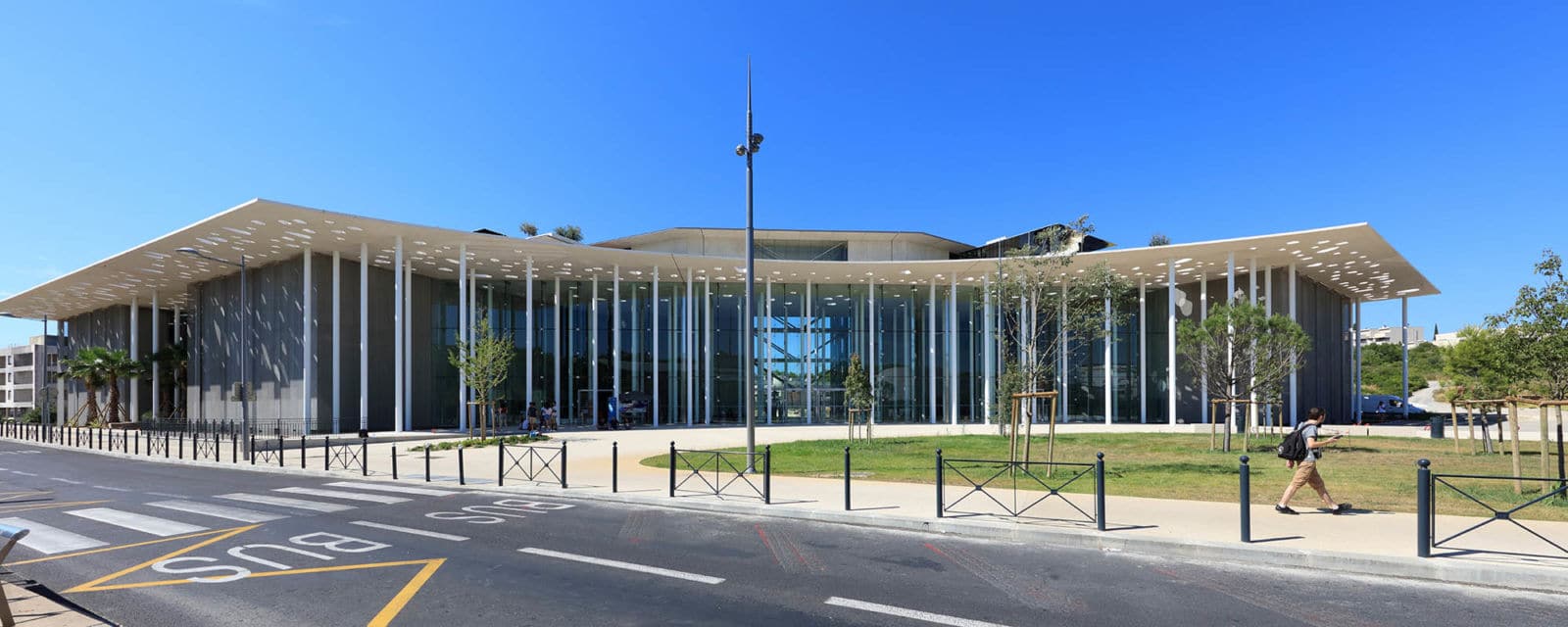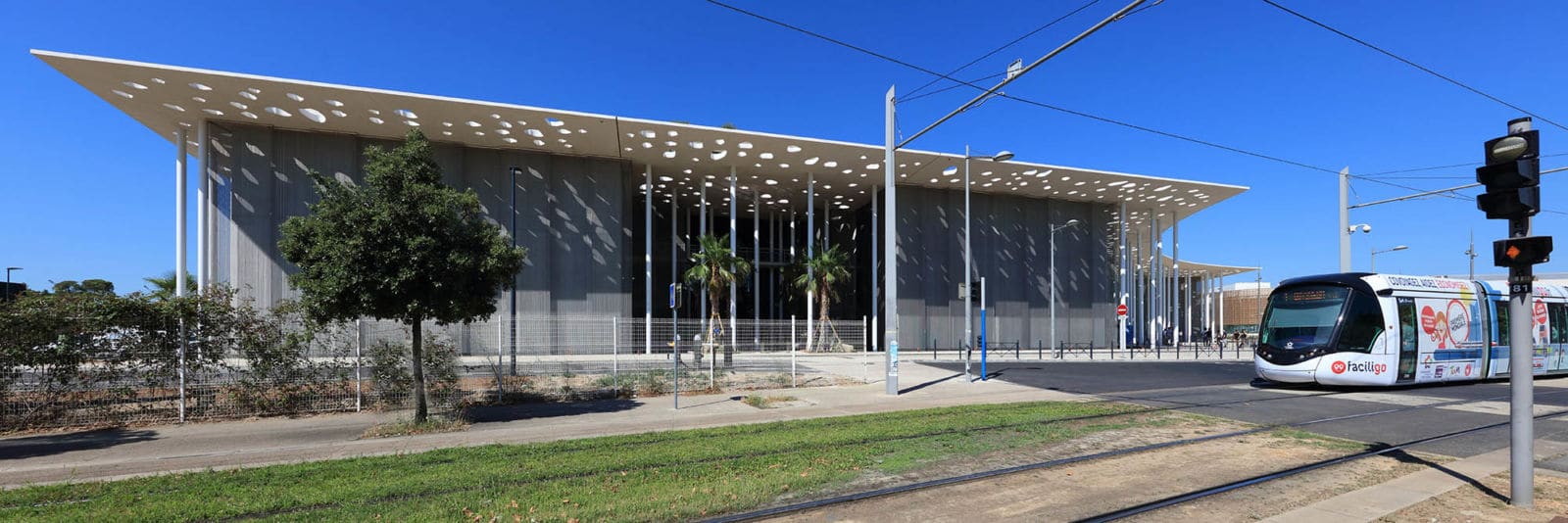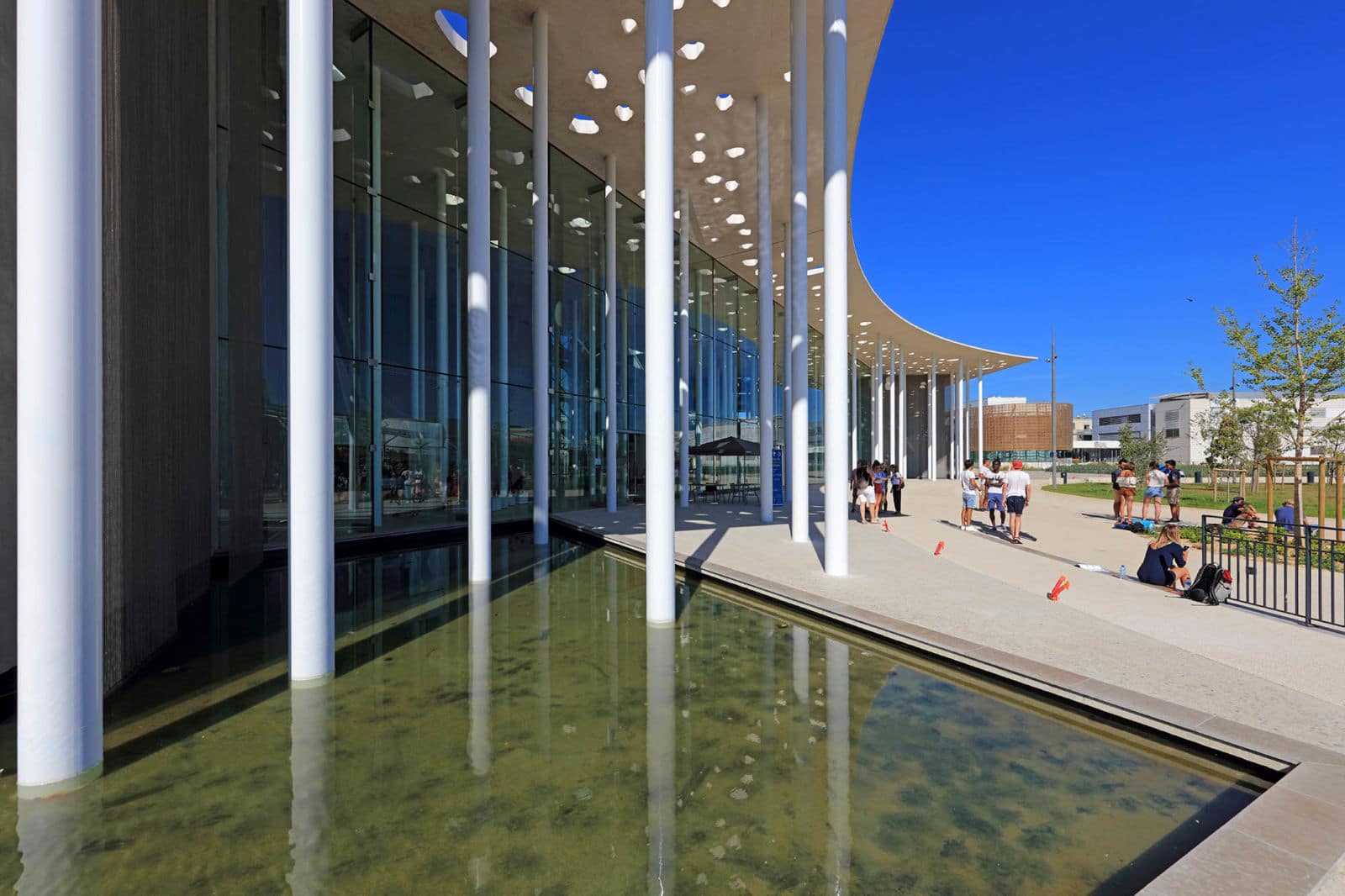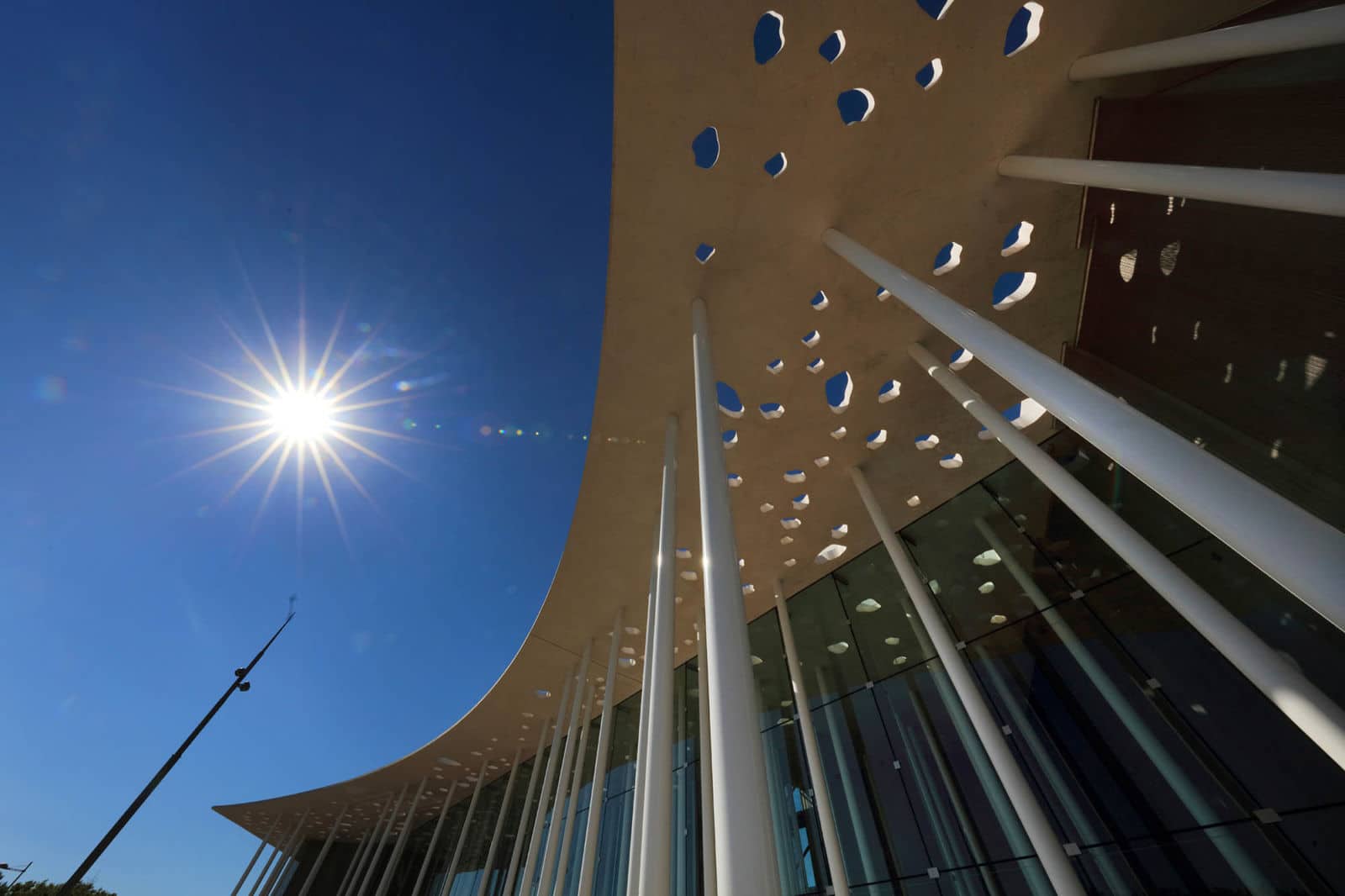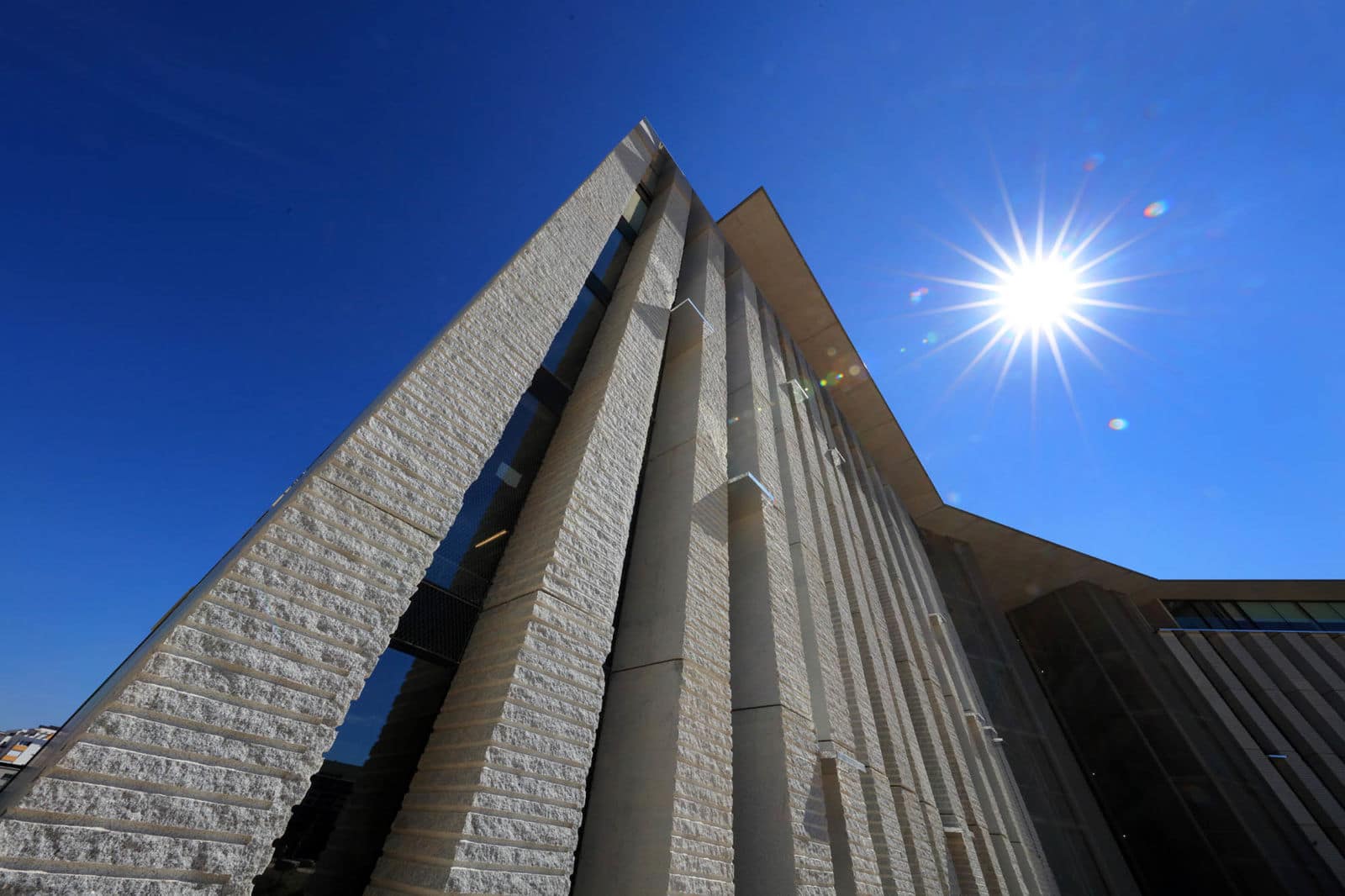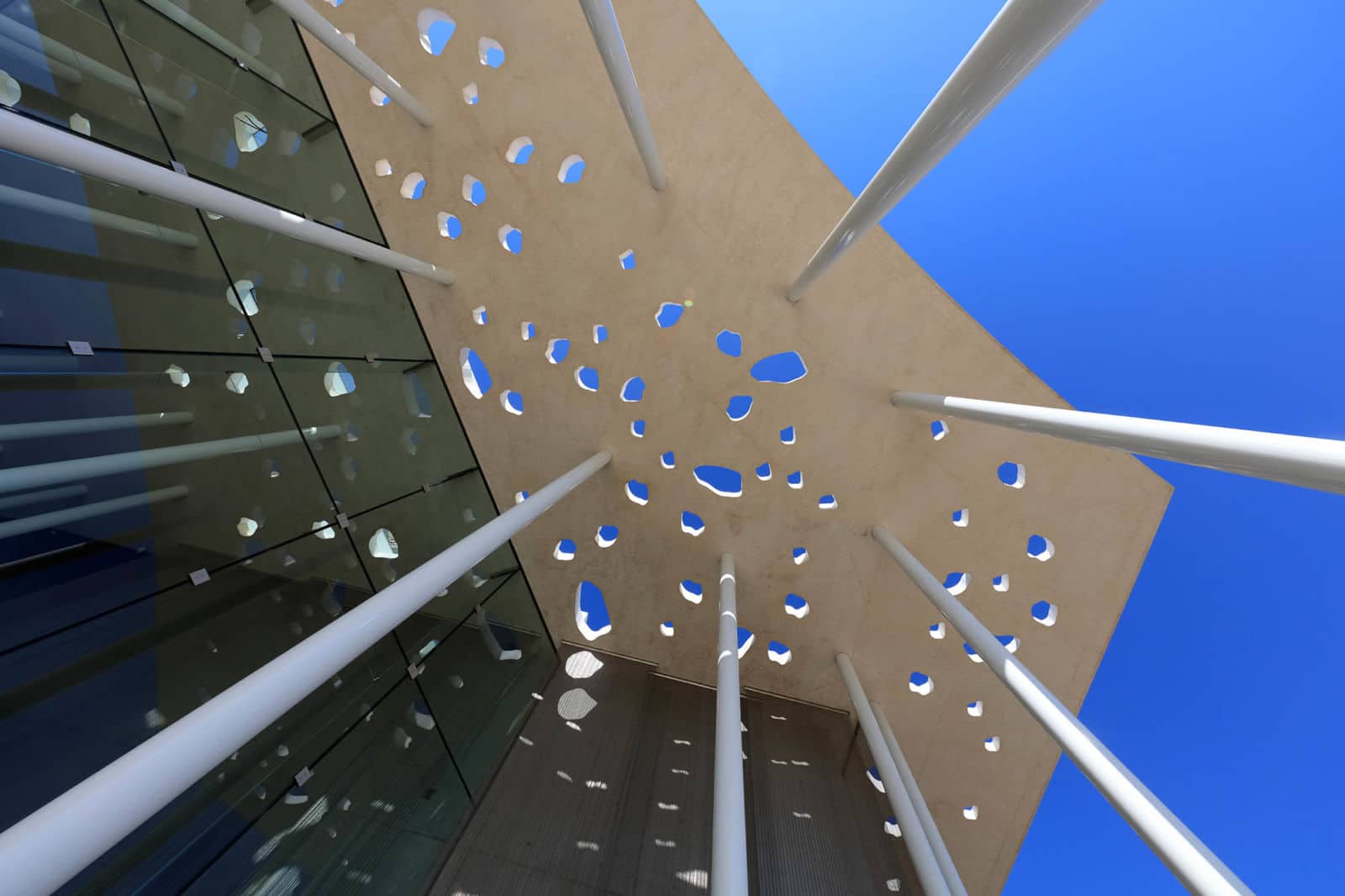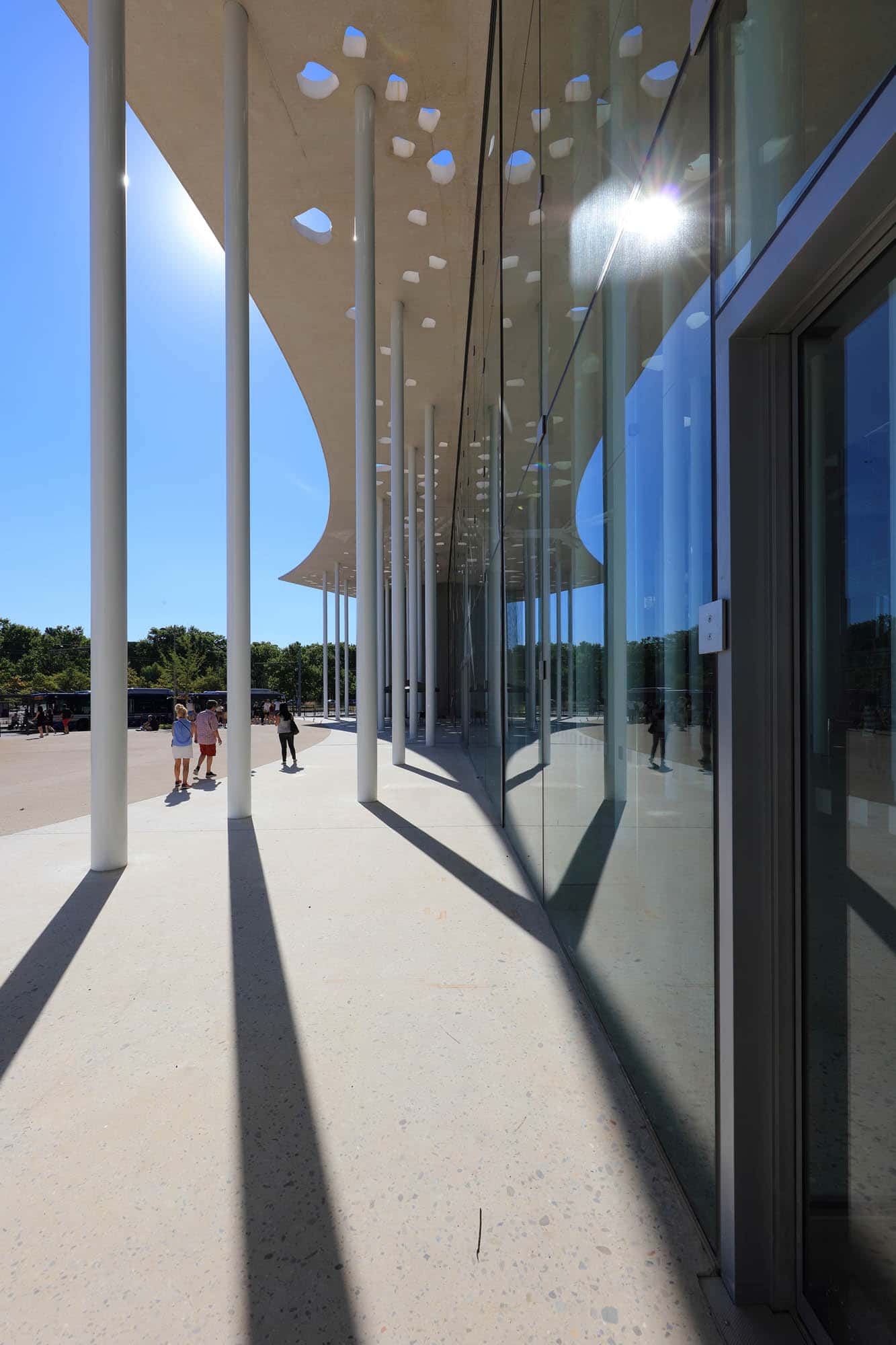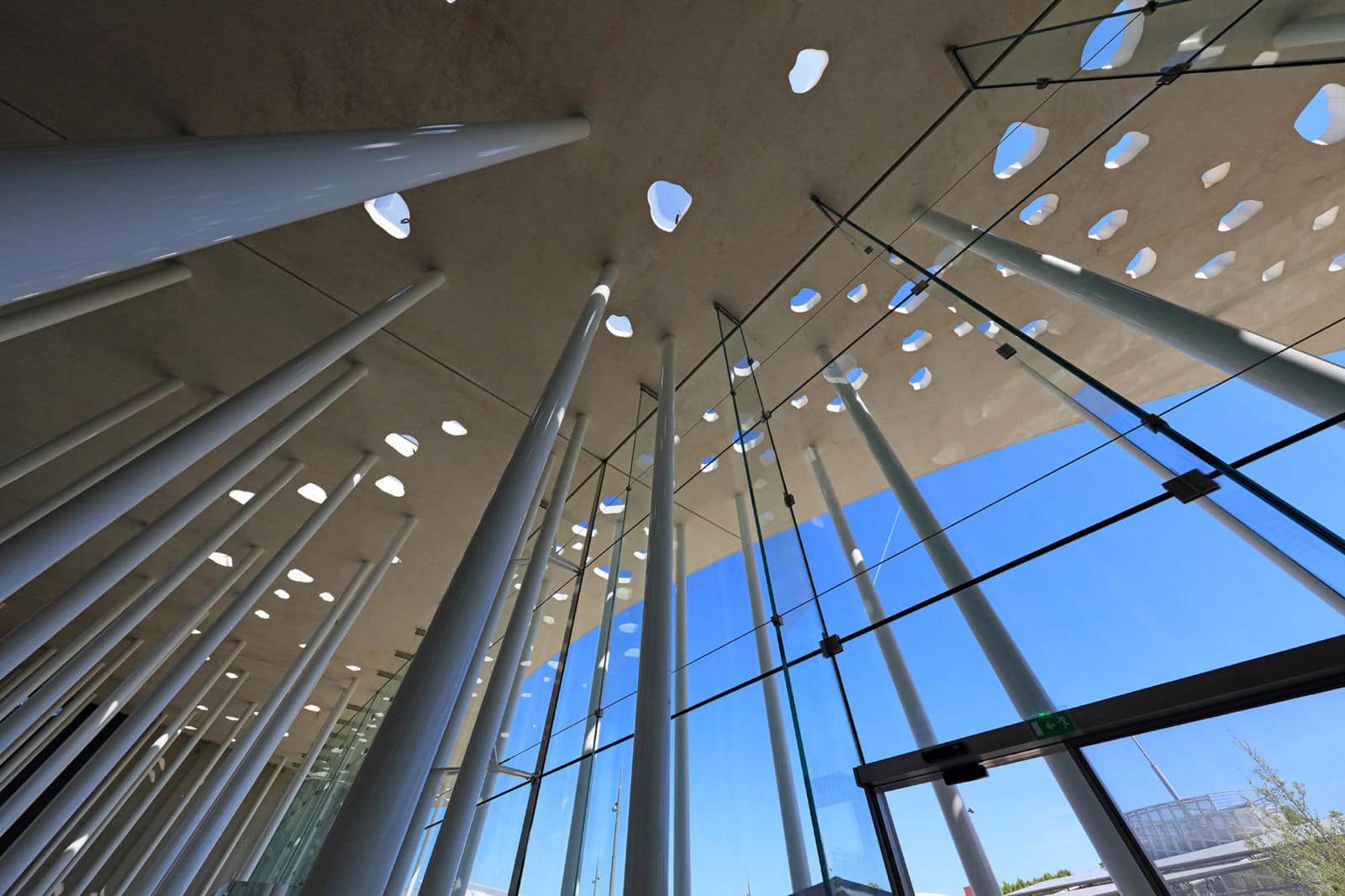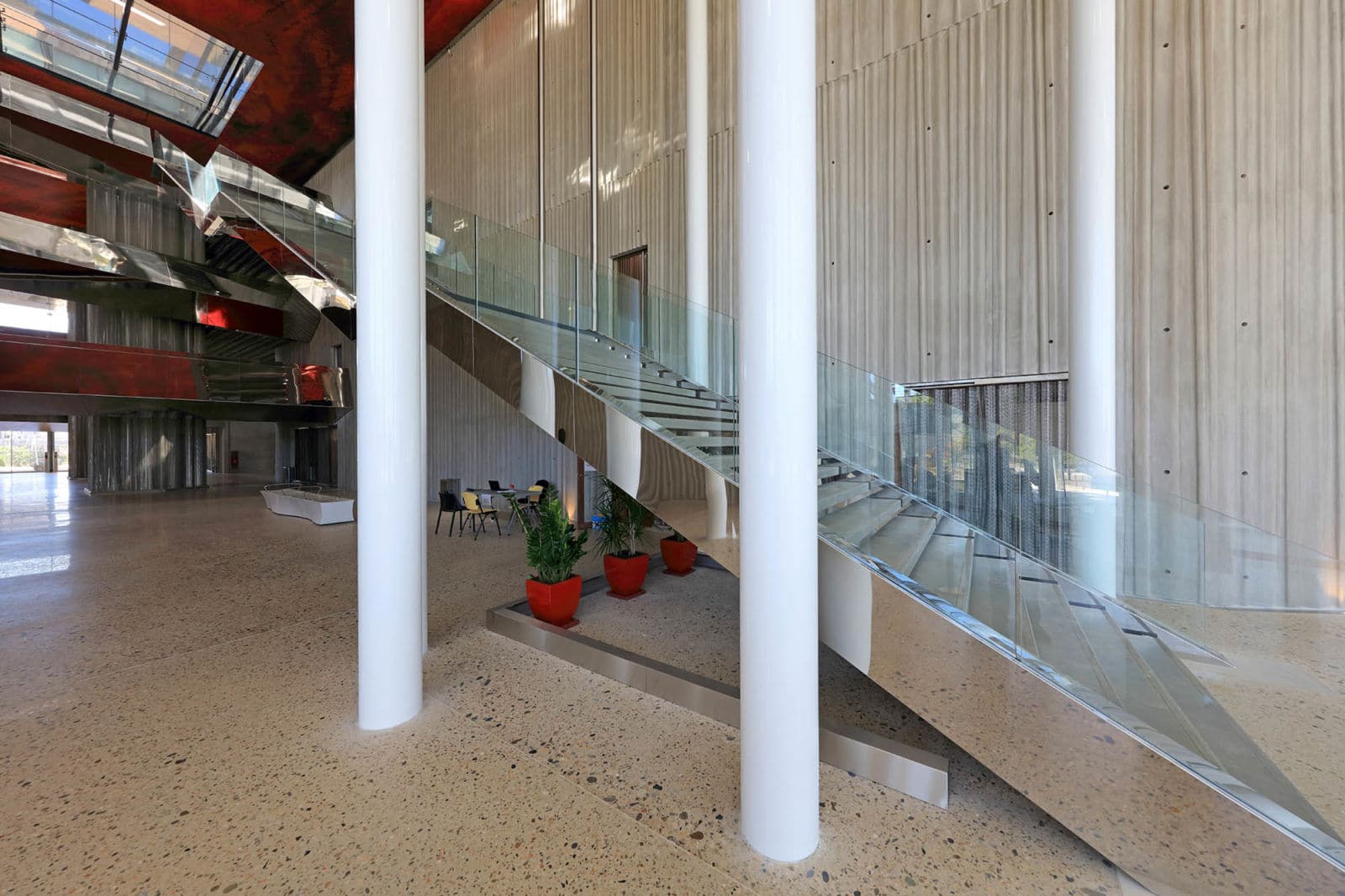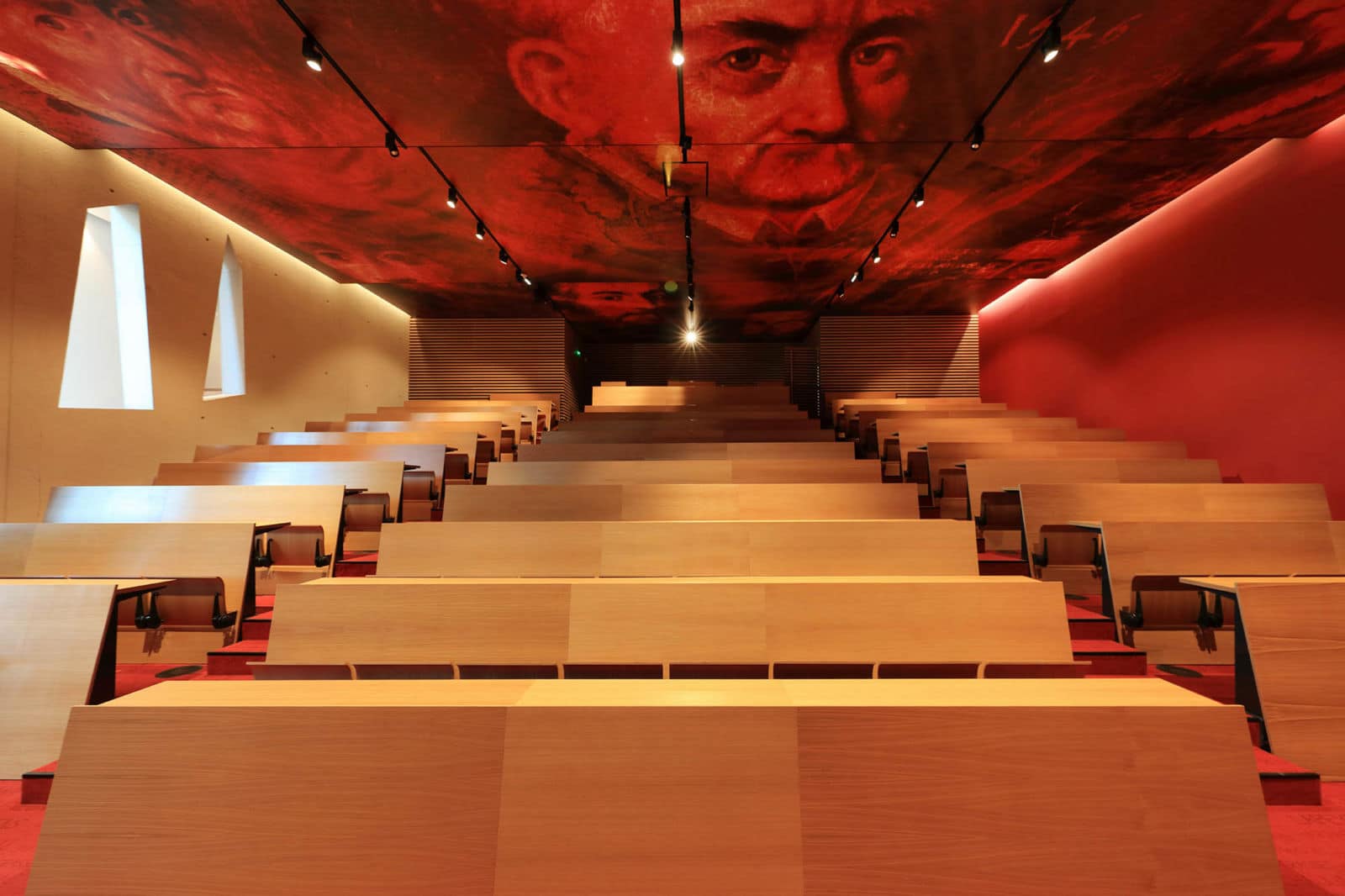A new showcase for Montpellier medicine!
The oldest medical school in the Western world moves from downtown Montpellier to the Arnaud de Villeneuve campus. While reviving a long tradition of educational innovation...
A new center of gravity. Since 1795, the Faculty of Medicine, the flagship of the University of Montpellier and emblem of a city renowned worldwide for its medical teaching since the 13th century, has been housed in the former monastery next to Saint-Pierre Cathedral. It has now left this prestigious building to be reborn in an ultramodern glass edifice at the heart of the Arnaud de Villeneuve campus.
Medicine of the future
A campus dedicated to biology and health: home to the Centre Hospitalier Régional Universitaire, the UM's Unité Pédagogique Médicale and top-level research units (theInstitut de Génétique Humaine, theInstitut de Génomique Fonctionnelle, the Centre de Biologie Structurale and theInstitut Universitaire de Research Clinique); as well as the CNRS Genopolys center, a hub for scientific exchanges and meetings in the health field.
Located close to hospital campuses and research centers, the new faculty offers a medical training platform unique in France, at the cutting edge of new forms of teaching: videoconferencing, visual communication, remote dissemination of knowledge, telemedicine, medical simulation, medical robotics...
Putting people at the heart of pedagogy
It also aims to be a place of study where teaching is refocused on the human element, for the greater benefit of students. From role-playing and simulations of medical procedures to theater workshops to teach future practitioners "savoir-être", the project's designers wanted to promote a warm, humanist vision of medical practice.
Montpellier-based architect François Fontès wanted to make this a central theme in the design of the building, which " must evoke its history and influence in a modern way, but also the essence of a science of the human being".
800 years of history
As the cradle of medical teaching, Montpellier owes its influence to its emblematic faculty, founded in 1220 - the oldest medical school in the Western world still in operation. The beginnings of medical teaching in Montpellier go hand in hand with those of the city, a trading town founded in 985 on a major communications route, at the crossroads of Jewish, Arab and Italian influences.
A reputation that attracted such illustrious practitioners to Montpellier as Arnaud de Villeneuve, Gui de Chauliac, François Lapeyronie, Rondelet, who built the first anatomy amphitheater, Nostradamus, who was expelled for non-obedience, and François Rabelais, who received his doctorate in medicine in 1537.
In figures
Total cost: €45.9 M
3,600 students
11,440 m2 total surface area on 6 levels
5 amphitheatres with 200 to 240 seats
25 teaching and work rooms
